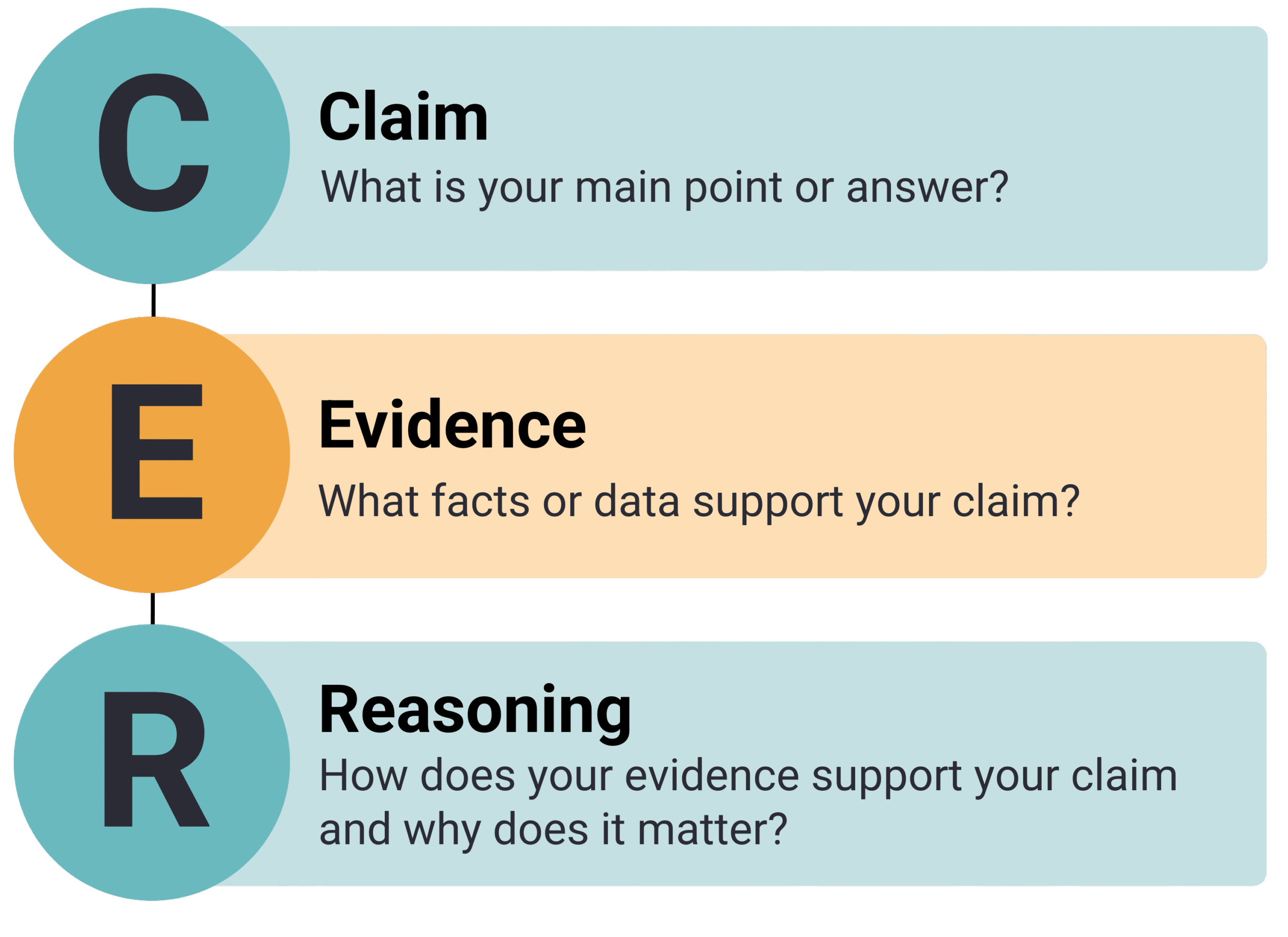
Strategy Parameters
Genres: Persuasive and Argumentative
Grade Levels: 6, 7, 8
Writing Process Stage: Planning, Drafting
At-A-Glance
The Claim, Evidence, Reasoning (CER) framework provides students with a structured methodology to construct robust written arguments and explanations by requiring a clear claim supported by evidence and justified through logical reasoning.
More about the CER Strategy

Overview
CER systematically guides students through three distinct steps: stating a claim, providing relevant evidence to back it up, and articulating the reasoning that links the evidence to the claim. This framework is highly effective in content-specific subjects like science and social studies, where students must logically connect concepts and justify their conclusions. By making the expectations for strong, evidence-based writing transparent, the CER strategy fosters critical thinking and elevates student responses beyond simple descriptions.
Purpose and Benefits
This strategy helps students:
-
Develop the ability to articulate a clear, defendable position or statement (the Claim).
-
Learn to discern and select relevant, supportive data or information (the Evidence) from source materials.
-
Practice explaining the connection (the Reasoning) between their supporting facts and their original assertion.
-
Transition from making surface-level observations to constructing thoughtful, justified arguments.
-
Apply critical thinking skills to content areas by demanding proof and logical explanation for their stated beliefs.
Why It's Effective
-
Structural Clarity: It provides a highly visible three-part scaffold that demystifies the structure of formal academic arguments, making expectations transparent.
-
Focus on Justification: The requirement for both Evidence and Reasoning forces students to think critically, moving them past simple fact recall to deep conceptual understanding.
-
Cross-Curricular Applicability: It is easily transferable to diverse content areas (e.g., science, history), establishing a consistent standard for evidence-based communication.
-
Reduced Ambiguity: By defining the roles of the three components, it helps students avoid common errors such as providing evidence without explanation or stating claims without support.
-
Cognitive Scaffolding: Breaking the complex task of argumentation into three manageable steps supports students in organizing their thoughts and producing a coherent final product.


